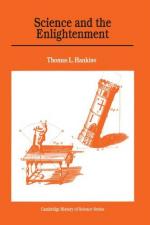
|
| Name: _________________________ | Period: ___________________ |
This quiz consists of 5 multiple choice and 5 short answer questions through Chapter 6, The Moral Sciences.
Multiple Choice Questions
1. According to the narrator in Chapter 5, who coined the word "spermatozoon" in 1827?
(a) Hartsoeker.
(b) Linnaeus.
(c) Swammerdam.
(d) Von Baer.
2. In Chapter 2, what was the name of the path of a body that is dragged over a resisting horizontal surface by a cord of which one end moves along a straight line found?
(a) Tractrix.
(b) Cycloid.
(c) Isoperimeters.
(d) Brachistachrone.
3. Madame du Chatelet supported the Leibnizian theory of ________ because it gave a better account of free will.
(a) Mechanics.
(b) Religion.
(c) Christianity.
(d) Physics.
4. The first mortality tables from which life insurance premiums could be calculated were constructed just at the end of the ________ century.
(a) 17th.
(b) 19th.
(c) 18th.
(d) 20th.
5. The narrator reveals that vis viva was a measure of ________ to conserve his creation while "action" was a measure of his efficiency.
(a) God's demeanor.
(b) God's desire.
(c) Man's passion.
(d) Man's desire.
Short Answer Questions
1. In Chapter 2, what was the name of the shape of a chain suspended between two fixed points?
2. In Chapter 3, who noticed that when he pulled off his silk socks in the evening, "they frequently made a crackling or snapping noise" and emitted "sparks of fire"?
3. Chapter 1 states that in 1700, ________ first talked about an "almost complete revolution in geometry" that had begun with the analytic geometry of Descartes.
4. Who argued in the "Preliminary discourse" to the "Encyclopedie" that mathematics was basic to all of physics, according to the narrator in Chapter 3?
5. What was the name of the curve traced by the end of a string as it is unwrapped from another curve found in Chapter 2?
|
This section contains 274 words (approx. 1 page at 300 words per page) |

|




